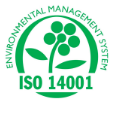
Like every year, different crops in different parts of our country are destroyed in the fields. In one area the potatoes drop in the godowns, due to non-availability of garlic yielding cost, farmers let them suppress in the soil, they are forced to sell many fruits like mango at no cost or at very cheap rates.
Onions, bananas, grapes and many vegetables are destroyed somewhere whereas availability in the other parts of the country is not available due to expensive transportation. Where the production is high in any area, process units related to the product should be set up in such areas to save the product from getting ruined and the farmers can get the fair value. This system has a complete absence in the whole country.
It is ironic that whenever a farm product comes into the market, its value continues to fall, and the arbitrators buy their goods at cheap rates, thereby making the business of agricultural losses.
Unfortunately, the value of the farmers’ commodity is either determined by the government or the buyer, in which the sale of the product that is immediately destroyed, at that point of time the farmer looks helpless. In such a situation, the purchase and sale system should be made strong and transparent and its value should also be determined by the farmers on the basis of demand, supply and cost.
New technologies and innovation may help with these challenges and help to achieve the aim.
Farming and agriculture
The availability of new techniques from biotechnology and genetic research provides opportunity to control cell metabolism and breeding. This makes it possible for developers to meet more specific requirements e.g. to increase a specific nutrient in a food.
New or old technology
We have used science and technology for thousands of years to help provide adequate food. The progression from hunter-gatherer to agriculture led to the need to store and preserve foods. Without some form of processing, foods deteriorate rapidly due to the action of micro-organisms and enzymes.
Production and processing
New technologies in food production and processing are driven by:
Knowledge and new techniques gained from research investigations;
Attempts to increase efficiency, reduce environmental effect of production;
Competition between food companies;
Consumer demand.
Innovation in food production, processing and new product development can offer benefits for consumers and the environment
In recent years demand has increased for minimally processed foods which retain their freshness. New techniques have replaced methods that rely on heating and drying. Modified atmosphere packaging is a way of extending the shelf life of fresh food products. The technology substitutes the air inside a package with a protective gas mix. The gas in the package helps ensure that the product will stay fresh for as long as possible.
Advances in food technology
Food technology advanced in the early 19th century with the invention of the canning process.
Since then the range of technologies used to process and preserve foods has expanded and uses a range of physical and chemical techniques. Some of these early methods of food processing and preservation are still used today.
New technologies have given us a greater range of methods to package and store foods. This enables the preservation of nutrients and the extension of food product shelf-life.
Importance of Research & Innovation in Agro and food Processing Sector:
Crucial to survival
Fast changing environment
Continuous technology change
Competition
Changing consumer preferences
Fundamental to marketing
Basic aim for research and innovation in agro and food processing is to create new products and launch them successfully on the market. Also, to Reduce costs (lower prices), Enhance sensory properties (more attractive), Improve Nutritional value (dietary needs), Improve food safety, add convenience, and to offer greater choices of food items to consumer. The end is always consumer satisfaction.
Food industry grew differently from other industries, for example Electrical Engineering started by applying basic knowledge of physics to create electric light and motors but food industry accumulated a vast resource of empirical knowledge, craft knowledge gained in actual life experiences of food preservation, preparation and cooking (only outstanding innovations, canning, refrigeration, and irradiation).
Food industry has always been among the low spender on R&D related to sale. Recessions and takeovers (common phenomenon) cause R&D cutbacks and combinations of R&D dept. Difficulty of controlling intellectual property in the food industry i.e., difficult to secure patent and profit from many foods because small adaptations outside the patent can give similar products. This has provided a basis to produce large quantities of a product as cheaply and quickly as possible (profits are made from handling large sales volumes).
Managing R&I in food industry will be valued very highly, as more and more innovations startup would come from products, processes, packagings, design and overcome supply chain and logistics challenges.
Some of the innovation ideas:
Developing new type of cost effective packaging which would be bio-degradable and compostable film.
Should be designed to significantly increase the shelf life of fresh produce, including sensitive, high respiration products like strawberries and potatoes.
This could save consumers money by significantly reducing the amount of food they throw away.
It could also save the fruit and vegetable industry large sums of money in wastage costs by extending the amount of time products stay fresh on shelves.
Sustainability- environmental issues:
Less use of energy
Less transport
Less refrigeration due to immediate processing,
Less packaging material
Carbon Neutral Living
Fewer resources, population growth and climate change are all putting pressure on the world™s food supply.
New technologies have given us a greater range of methods to package and store foods. This enables the preservation of nutrients and the extension of food product shelf-life. Consumers are also concerned about the amount of food waste in the supply chain.
New packaging technologies are available and will continue to be developed to help extend the shelf life and quality of food. This aims to reduce food waste.








.png)